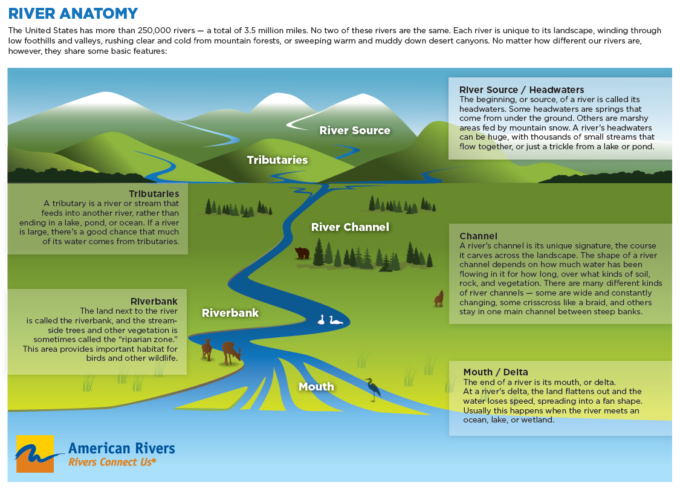
Rivers are large bodies of water with a typically unilateral directional flow. Every river must have a source where it begins known as the headwaters and an estuary where it meets the ocean or sea. Rivers are categorized as major, medium, and minor, depending of the number of tributaries, the stage of development, and its use as a resource.
An ecosystem can be defined as the totality of interactions between plants, animals, and microorganisms in a particular environment. A river ecosystem is recognized by these specific characteristics:
- Water flow that is typically unidirectional and variable in the rate of flow
- A state of constant physical change due to changing water flow and its volume
- Plants and animals that have adapted specific traits for surviving in this ecosystem
- A large variety of micro-inhabitants
What Happens when this Delicate Balance is Disturbed?
The EPA has concluded that plastic waste materials are among the most harmful pollutants found in our waterways:
…plastic trash has the greatest potential to harm the environment, wildlife and humans. It can be found floating at the surface, suspended in the water column, or on the bottom of almost all water bodies. It is transported by rivers to the ocean, where it moves with the currents, and is often eaten by birds and fish, concentrating toxic chemicals in their tissues, and filling their stomachs, causing them to starve. Plastic aquatic debris is much more than a mere aesthetic problem.
(https://www.epa.gov/trash-free-waters/impacts-mismanaged-trash)
The EPA goes on to state that when benthic habitats are disrupted by the infiltration of plastic debris, this critical ecosystem is greatly threatened. The term benthic refers to anything related to the bottom of a waterway. This environment provides habitat for plants and animals alike and those that do reside there are referred to as benthos.
They note that “as debris accumulates, habitat structure may be modified, light levels may be reduced in underlying waters, and oxygen levels may be depleted.” They conclude that aquatic life finds it increasingly difficult survive and that the demise of affected habitats is imminent. The decline of indigenous species due to the alteration of these habitats is likely to have an unrecoverable impact at some point in time.
The Truth About Recycling / How Plastic Ends Up in our Rivers
Although recycling methods may not be a problem, the fact that the majority of recyclable materials never actually make it to a recycling facility is a huge one; one that is changing the planet day by day and not for the better. It is unfortunate to blame the bulk of this issue on human error, but research reveals that this is in fact the case. Over 91% of plastic used never makes it to a recycling facility.

Learn more here:
- https://www.nationalgeographic.com/magazine/2018/06/plastic-planet-waste-pollution-trash-crisis/
- http://plastic-pollution.org/
- https://news.nationalgeographic.com/2017/07/plastic-produced-recycling-waste-ocean-trash-debris-environment/
- https://geminiresearchnews.com/2018/04/plastic-rivers-lakes-growing-concern/